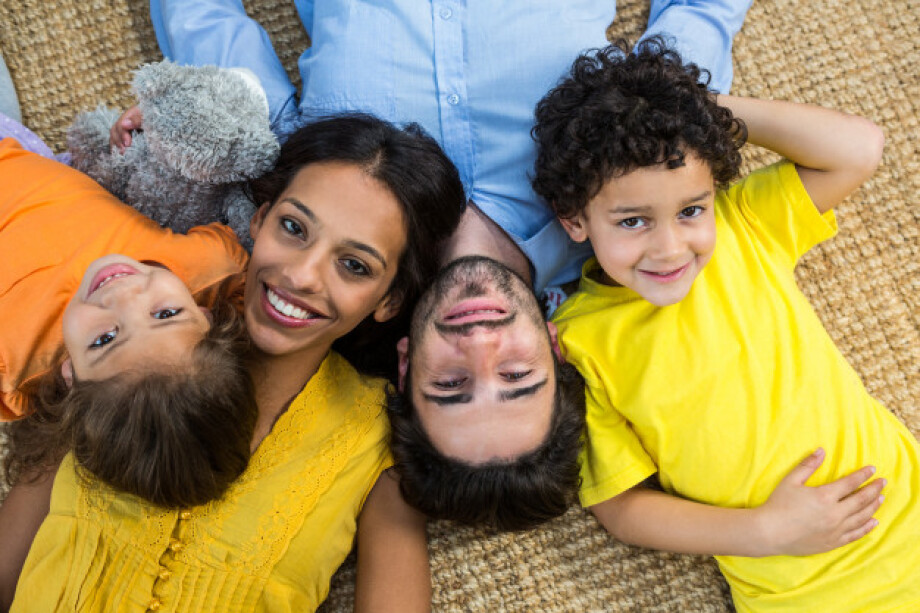Polyglot is someone who can use several languages.
Why and how does it happen?
It all depends, but there are two main reasons. Some children grow in a multilingual environment, for example, parents speak different languages and they even live in a country where there’s a third language, so kids acquire the languages. Other children start learning lots of languages from early childhood. As children grasp the meaning of words quickly and tend to learn languages in a more natural way, it’s much easier for them to become polyglots rather than for adults.
Stories about children polyglots
The first example is about children “grown” in a multilingual environment. My friend is Russian, her husband is English and they live in the United Arab Emirates. They have two kids and both grow trilingual. They speak two languages at home and the third, Arabic, in kindergarten and school. Due to globalisation, this situation is becoming more frequent. Parents move to different countries and children are exposed to different languages.
Another example of a girl “taught” different languages, not “grown” in a natural multilanguage environment. This 4-year old girl, Bella, speaks 7 languages. Her parents invested a lot of time and effort in her development. Her mother is a linguist and she spoke with Bella in English and Russian from birth, alternating every other day. At the age of 10 months, she started teaching her French. Bella started reading very early using special cards with the words written. This method is known as “word recognition”. At the age of three, she started learning Chinese. Bella watched cartoons in Chinese. Then, the girl showed an interest in learning Spanish, German and Arabic. She does everything that all children do every day but in different languages. Parents organize educational excursions with native speakers for her, she also attends an English theatre club, studies drawing in French, dancing in Spanish, and attends figure skating lessons with a native German speaker. In addition, the parents regularly organize joint language classes for Bella and her friends who are also brought up in a multilingual environment.
The last example is a combination of both: being “grown in and taught” different languages. This girl is 7 years old and speaks 5 languages: English, Spanish, Japanese, German and Sign Language. How come? She lives in Spain and she speaks Spanish and Japanese at home with her parents. She goes to Japan for 2-3 months every summer and attends Japanese summer schools. Moreover, she attends an English medium international school. Her uncle and cousin are native English speakers In addition, she has a number of German classes as part of the curriculum. Finally, she also takes sign language classes at the school. So this is a mixed way of becoming a polyglot: she’s immersed in a Spanish and Japanese environment and she studies 3 languages as well.
How to grow a polyglot?
- Spend the majority of hours teaching or speaking other languages. You can make a schedule: Monday — English, Tuesday — Russian, Wednesday — Spanish, etc. Or you switch between activities and language during the day.
- If there’s an opportunity, have your child attend an English (or any other language) kindergarten or school. They’re immersed into Russian at home, but can “dive” in another language during the day.
- Create or find extracurricular activities in different languages: Art in French, Sport in German, etc.
- Create a fun language environment at home if possible. Children can watch cartoons, sing songs, play games and read books in different languages.
- Have the child used the languages regularly and in different contexts. Develop a routine and stick to it. Otherwise, they will have one limited “set” of vocabulary for each language depending on experiences they’ve had in this language.
- Encourage, motivate and be supportive!
What are the pros and cons of being a polyglot?
Pros
- Multilingualism has a positive effect on a child’s overall development. It helps to develop better reading and writing skills, but also analytical, and social skills.
- For kids, growing up with multiple languages is an effortless way to learn them. It’s just natural.
- Polyglots are flexible, adaptable and confident in social situations.
- It’s a long-term investment. Speaking several languages will create more opportunities for a child in the future.
Cons
- Early training does not guarantee that the child will be fluent in the language in the future.
- Multilingualism may cause a lag in the development of speech at an early stage in comparison with children who grow up with only one language.
- There’s a risk of mixing languages. However, it’s a temporary phenomenon.
- Raising a multilingual child requires more effort from parents.
Personally, I’m “for” teaching children foreign languages at an early age and I’m sure both kids and parents can benefit from this in the future.






 Вероника Аветисян
Вероника Аветисян 
 Маргарита Аветисян
Маргарита Аветисян 


